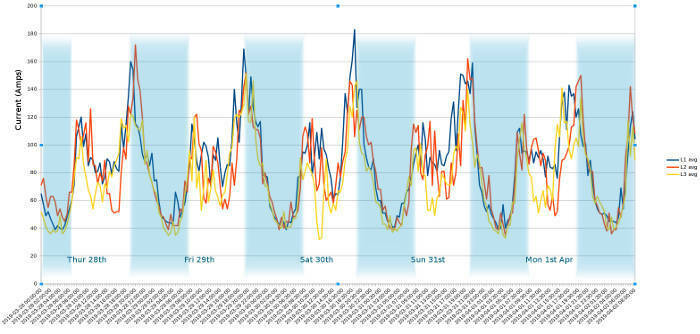I am hoping someone from OVO will be able to help me with this.
With your new (upcoming?) V2G tariff which pays for exported energy:
1) Does this work with a smart meter (SMETS2?) which keep track of 'exported' energy kWh via a separate reading? Therefore it's counting both the EV car's exported energy and the solar panel's exported energy together?
2) Would someone with solar panels therefore be paid by you on the basis that they're outside of the FiT scheme (opting-out or never registered for FiT export payments?)
3) Does the solar panel energy have to first be 'fed into' the V2G car battery, and then exported out to the grid via the V2G connector, or e.g. when the car isn't connected to the charger and is out on the road, and there is excess solar energy being produced at home, would that energy be exported and counted by the smart meter directly and would this exported energy still be paid for by you regardless?
4) Is it a REQUIREMENT that we have an EV car and/or purchase an EV charger from you, in order to sign up for this new tariff?
I purchased a property a few months ago and the previous owner, for whatever reason, never registered for the FiT and it's no longer possible to do so as the system was installed prior to 2016.
Therefore I'm not registered for export payments, and it would be nice if via an innovative energy company and a smart meter-based export meter, I would be able to get paid for exporting this energy to the grid.
I am looking to possibly get an EV car in the next two years, but it's not an immediate priority, hence why I'm wondering if EV car ownership is an absolute requirement to join this new tariff of yours.
Many thanks in advance for any answers!
- Forum
- My OVO energy
- The Archive
- V2G Tariff, Smart Meters, and Solar Panel Export Payments - how does it all link up?
V2G Tariff, Smart Meters, and Solar Panel Export Payments - how does it all link up?
- January 9, 2019
- 58 replies
- 4273 views
- Carbon Cutter*
- 2 replies
Best answer by Hari_OVO
Updated on 09/05/22 by Jess_OVO
Our Vehicle-to-Grid (V2G) trial is no longer accepting new participants - check out our latest electric vehicle (EV) plan OVO Drive here.
Thanks for your message, it's a very interesting topic - and certainly one that is going to become more and more relevant given the recent government announcement that they would be removing FiT export payments on solar installations that take place after April 2019. If you haven’t got the required certification for your solar panels - check out the advice on the MCS website.
I'll answer your last question first, as it's probably the one that you're most keen to know the answer to, and there is a very short answer, which is yes. Unfortunately, in order to receive export payments via our V2G trial, you will need to own a Nissan Leaf.
We measure export reads via your smart meter, irrespective of whether it is a SMETS 1 or SMETS 2. And yes, you're absolutely right, it will measure exported energy regardless of whether it is from your car or solar.
We will give customers an export credit, on the condition that they have opted out of any FiT export payments that they may have previously been receiving. If you don’t have a Nissan Leaf and are looking for another way to be credited for the energy your solar panels are sending back to the grid, find out more about the Smart Export Guarantee and how to apply for this with OVO here.
58 replies
- Author
- Carbon Cutter*
- 2 replies
- January 10, 2019
- OVO Product Team
- 14 replies
- Answer
- January 11, 2019
Updated on 09/05/22 by Jess_OVO
Our Vehicle-to-Grid (V2G) trial is no longer accepting new participants - check out our latest electric vehicle (EV) plan OVO Drive here.
Thanks for your message, it's a very interesting topic - and certainly one that is going to become more and more relevant given the recent government announcement that they would be removing FiT export payments on solar installations that take place after April 2019. If you haven’t got the required certification for your solar panels - check out the advice on the MCS website.
I'll answer your last question first, as it's probably the one that you're most keen to know the answer to, and there is a very short answer, which is yes. Unfortunately, in order to receive export payments via our V2G trial, you will need to own a Nissan Leaf.
We measure export reads via your smart meter, irrespective of whether it is a SMETS 1 or SMETS 2. And yes, you're absolutely right, it will measure exported energy regardless of whether it is from your car or solar.
We will give customers an export credit, on the condition that they have opted out of any FiT export payments that they may have previously been receiving. If you don’t have a Nissan Leaf and are looking for another way to be credited for the energy your solar panels are sending back to the grid, find out more about the Smart Export Guarantee and how to apply for this with OVO here.
- Author
- Carbon Cutter*
- 2 replies
- January 16, 2019
Your reply does indeed answer the bulk of my questions on this topic. It's always seemed crazy that there could be people out there generating electricity, feeding it onto the grid, and yet not receiving any kind of credit or payment for that. Utilities and DNOs pay generators for the electricity produced and fed onto the grid - if individuals are slapping solar panels on the roof and providing that energy to the grid, why shouldn't they receive payment for it too, given the energy produced will then be resold for a profit?
The recent news that the government are looking to legislate for utility companies to pay export payments is wonderful news, and hopefully should open up a lot of exciting possibilities for people who are generating electricity and feeding it back, regardless of how it's produced.
I'm not surprised your V2G tariff is only open to Nissan Leaf owners at this trial stage. However, would it be reasonable to assume that once the tariff is complete, you intend this tariff to be open to the public, and anyone is free to sign up for that tariff, that it won't be limited to Nissan Leaf owners?
Also, would it be fair to say Ovo will be looking to introduce export credits more broadly after the government's latest announcement?
The tying-together of EV car and solar generation, EV and home battery storage, smart meters and export payments opens up a lot of exciting possibilities for individuals... to generate and to import electricity during 'off-peak' periods, charge up the car, store it for use at 'peak' consumption times, and then discharge the surplus onto the grid during peaks when it's needed most in exchange for payment.
We live in exciting and innovative times. :)
Kind regards,
Steve
- OVO Product Team
- 14 replies
- January 16, 2019
They are indeed exciting and innovative times - we're really looking forward to rolling out our V2G trial this year and see how those who are on the trial get on with it. The feedback we get will be crucial to whatever comes next!
People who generate electricity via their solar panels at the minute do receive a 'deemed export payment' - as exports aren't specifically measured via your solar panels generation meter, exports are assumed as 50% of the total generated, and as part of the FiT scheme you're paid 5.14p/kWh exported. It's really unfortunate that the previous owner of your property didn't register for the FiT scheme, I can't work out why they didn't!
But yes, this export payment will cease for customers installing new solar panels later this year. Unfortunately I'm not aware of what our plans would be around offering export credits beyond the V2G trial, so that's a tough one for me to answer!
I am really positive about the future of V2G though. As you say, it has the potential to open up a lot of exciting possibilities. As mentioned above, we're hoping to use our upcoming trial to test, learn and then move forward - so what the future looks like for us in the V2G space is still not completely defined either!
Sorry - probably haven't been able to give you as clear cut answers as you might have hoped for! Anything else, do let me know!
Hari
- Carbon Catcher***
- 982 replies
- January 22, 2019
The amount that OVO can credit a customer for supplying the grid will change as the algorithms used to calculate this get developed.
Electricity tariffs are composed of three elements:
- the buy-in cost of the energy to OVO (assessed each half-hour)
- the network charge payable to your DNO
- OVO's profit
However, DNO's are now required by Ofgem to reduce system losses under a scheme called RIIO. Their future revenue is directly linked to their success. RIIO-ED1 (Electricity Distribution, Phase-1) is shortly to be replaced by RIIO-ED2 which will require DNO's to take active steps to change the way its customers use the network.
Much of the technical loss (ie not including theft!) is due to imbalances at the sub-station level. Phase imbalance manifests itself in heat and noise emitted from the transformers which step down from 11kV.
However, less than 100 of the 240,000 substations have any monitoring installed. So DNO's try to diagnose imbalances and overloads by generating stats on reported faults and batch-analysis of those of us with Smart Meters.
Customers who have installed solar-panels onto single-phase domestic supplies are the major cause on increased technical losses. Worse still, because the electricity is generated during the day when many home-owners are out working, the over-generation isn't used locally, and gets passed back up the line to the area-stations (32kV) and the national network (132kV).
In future DNOs will need to change the Network Charges for customers according to how much loading or relief they provide to the Distribution Grid.
So a householder with Storage Batteries and/or an EV (with a V2G charger) will find that their network charges get lowered if they provide access to their stored charge when there are demand peaks.
Equally, homes that are particularly burdonsome to the network may see their network charges increased.
So the lower 2p /unit that
In many cases, the homes with PV and Batteries will be given the most credit because their energy hasn't ever had to travel down the Transmission Grid in the first place.
Does that make sense?
- Carbon Cutter****
- 8 replies
- January 28, 2019
I think it sounds like the previous owners of your house went for one of the free solar installations if you let the installation firm have the Fits payments, under these circumstances you only get any electricity you can use when generating.
That would explain why they didn't register for Fits and means that a company somewhere is getting your Fits payments.
Rregards to all Pete
- Carbon Cutter**
- 9 replies
- March 1, 2019
- When will people like me who live in Scotland, have solar panels, receive the FIT payment and own a 24 Kw Leaf be able to join your scheme?
- Why are Scottish people being prevented from joining now?
- If Rishi's FIT payment is going to the firm who installed the system (which is very likely) will this firm have to cancel the FIT claim before Rishi can join your scheme?
- New Member*
- 1 reply
- March 3, 2019
Philippa
- Retired Moderator
- 171 replies
- March 7, 2019
- New Member*
- 1 reply
- March 23, 2019
Do you have any indication when this year your V2G trial is expected to start?
- OVO Product Team
- 14 replies
- March 25, 2019
We're taking a slow and steady approach to these initial installs, to make sure we catch any issues as they arise, but we are looking to start expanding the trial at a greater pace over the coming months.
Let me know if you have any more questions!
- Carbon Cutter**
- 9 replies
- May 5, 2019
I have prepared a spreadsheet as under which appears to show that at any level of V2G usage those with solar panels lose out. at 18 Kwh usage (only an example - changing the value of B6 can show the results for any usage) solar panel owners would receive £166.40 per year whereas those without solar panels would receive £394.20. the £166.40 would actually only be £99.55 from V2G as the solar panel owner would have received £66.85 from the FIT payments now stopped. This is a net loss of £294.65 per year. Even if the FIT payments were still paid the loss would still be £160.95.
SURELY I MUST BE MAKING A MISTAKE.
I am keen toprovide the benefit of V2G to the reduction in electricity to be produced by polluting systems but the earnings from V2G systems do not appear to be high (I do not know the costs involved yet) and I cannot see why users should be punished for having already helped by installing solar panels. I see that we are now being told that when installed in a home with a single phase electric supply solar panels actually cause some problems on the mains. This was never said when they were being pushed hard. Surely the best way to attack this would be to encourage solar panel users to use V2G and battery storage to keep as much of the generated power as possible at home rather than feed in back to the mains. The best way to do this would be to encourage EV owners to have V2G and reduce the cost of batteries to make them viable rather than punishing early adopters of solar panels in the way proposed. My spreadsheet shows that even if the FIt payments were still available solar panel owners would still lose out unless the V2G output was less than 7 Kwhs. Surely it does not make sense to lose out from making more power available which is the object of the exercise.
Please enter this spreadsheet into whichever system you uuseand tell me where I have gone wrong.
Column Column B
1 Power generated by solar panels (kwh per year) 3500 my yearly average
2 Payment earned from assumed export in £/Kwh (FIT) £0.0382
3 Payment earned from Export in £ without V2G (FIT) £66.85 B1/2*B2
6 Power exported by V2G system (Kwh/day) 18 Variable input
7 Power exported by V2G system (Kwh/year) 6570 B6*365
8 Payment earned from export frm V2G in Kwh without panels £0.06 OVO Figure
9 Payment earned without Solar Panels per year £394.20 B7*B8
11 Payment earned from export from V2G with solar panels £0.20 OVO figure
12 Payment earned with solar panels per year (inc solar export) £166.40 ((B1/2)+B7)*B11
13 Net income from V2G with solar panels £99.50 B12-B3
15 Profit or loss from having solar panels with V2G system -£294.65 B14-B9
Both items under assume FIT payment still allowed:
17 Profit or loss from solar panels with V2G system £233.25 B12+B3
19 Extra profit (or loss) from having solar panels with V2G system -£160.95 B18-B9
both the losses shown above are compared to the same V2G output without solar panels.
Jim
- Carbon Cutter**
- 9 replies
- May 6, 2019
However I find it hard to understand why customers with Solar panels are to be paid 2p per Kwh. This means that they will get only 1/3rd of the income of others for the same input of electricity and in addition will be paid LESS than the current 3.82p per Kwh that they currently get for feeding excess generation into the mains.
The result of this would result in an effective loss of more than half of the income if the FIT payment was paid for generated electricity as at present and the V2G power treated separately.
I understand that OVO do not want to pay 6p for the generation which currently gets 3.82p but based on my own generation figures and an estimate of V2G figures I would be being paid almost nothing for taking part in the V2G scheme.
I seriously want to take part in this scheme in order to help the environment but surely the returns being offered are far too low.
I currently get approx £60 per year for FIT, at 2p per Kwh I would get approx £40. The return of approx £18 (at 2p per Kwh) would not quite give me the original return. These figures are only estimates but certainly show that any return for V2G plus solar would at best equal the current FIT payment.
If the full 6p were to be paid the result would be an over payment of approx £20, hardly worth complicating the system to save this from the minority who have solar panels, but if a special rate has to be used this should be approx 4p per Kwh to allow users to break even.
Will OVO reconsider the payment rate to be used?
- OVO Product Team
- 14 replies
- May 7, 2019
Assuming your unit rate for importing electricity was £0.16p/kWh, you'd be getting £0.18p/kWh exported.
So, in your case - if you assume that you continue to export the same kWh's from your solar panels, under the V2G scheme you would be getting:
(3500/2 * 0.18) = £315 - from your solar exports
instead of
(3500/2 * 0.0382) = £66.85 as you currently are under the FiT scheme.
You would also be getting:
6570 * 0.02 = £131.40 - from your V2G charger exports
In reality, we would take a total export read from your smart meter each month rather than splitting it out as above, but the same calculation still applies as you'll be compensated much
more for exporting via solar than you currently are.
I should also note here that we will be measuring your actual exports rather and giving you an export credit based on this, rather than giving you a deemed export payment from solar, so doing a like for like comparison may not be 100% accurate.
Appreciate that's not necessarily straightforward to digest but let me know if that makes sense?
Thanks,
Hari
- Carbon Cutter**
- 9 replies
- May 8, 2019
I am very glad that you responded to my question and showed me that OVO staff do indeed read customers input and consider them seriously.
As you say the figures I used are only estimates based on assumptions which will not necessarily be repeated in real life.
I have had a LEAF since 27/08/2011 and have kept a spreadsheet showing my gas and electricity readings since then so I can give you better information about likely usage.
As I said before my 4 Kwh solar system (the largest for which TIFF is available) has produced a maximum of about 3500 Kwhs in a year. TIFF gives me 3.82 pence per Kwh for half of this production 1750 Kwhs- £66.85.
This is based on the assumption that about 50% of the production is fed onto the mains and 50% used in my home.
This assumption was slightly optimistic even for the first few years until I purchased a Nissan Leaf.
My Leaf has a 24Kwh battery.
I travel approx 10,000 miles per year (about the average) and get about 3.5 miles per Kwh which means that the car uses about 2,875 Kwh.
The nearest public charge point is approx 10 miles from my home so it is not practical to use it for charging except when I am travelling near it.
I guess that about 50 % of my charging is done at home. This is an under estimate but I do not want to under estimate the benefits I get from the availability of free charging in Scotland at a cost of £20 per year.
This means that the car uses up about 1,438 Kwh of the 1750 Kwh which was estimated to be available after normal house usage.
This means that a maximum of 312 Kwh per year This is is available to fed back to the mains.
I previously suggested a figure of 18 Kwh per day as being used from the car battery.
This is 6,750 Kwh per year.
We can ignore the cost of electricity which varies by area as any power fed to the mains is effectively returned free of charge.
Anyone without solar panels would receive 6p per Kwh for this i.e. £394 20.
Anyone with solar panels would receive 2p per Kwh i.e £131.40
The 312 Kwh provided by the soar panels would effectively receive the cost of purchase (at present this is 14.29p per Kwh in Scotland) plus 2p Per Kwh I.e £50.82
So the total received with Solar Panels (£182.12) compares with the £394 without Solar Panels.
i.e Solar Panel owners are losing £211.88. i.e more than 50% plus the £66.85 TiFF payment
This is a total loss of £288.65.
If the full 6P were paid with Solar Panels this would result in an over payment of £18.72 per year surely not enough to justify a separate system.
Even these figures assume that the original estimate of 50% of solar production (1750Kwhs)was available for export to the mains which (as I said at the start) I suspect was an over estimate.
As you said the effective payment for export from the solar generation is considerably higher than the FITT payment, but unfortunately the payment would only be due on a very small figure (quite possibly ZERO) as the car uses most of the generation in charging.
I realise that there will be some days in summer when high production and low in house use may affect this but this is also the time when the car will be used more often.
Please give me your opinion of these more realistic figures.
Jim
- OVO Product Team
- 14 replies
- May 10, 2019
I can certainly see the logic behind your calculations.
I think a key thing here though is that, while your solar panels are generating energy, it is not guaranteed that this energy will always be consumed by your car. The V2G charger will charge based on grid signals rather than focusing primarily on when your solar panels are generating energy. As such, it may be that when your solar panels are generating energy, if you aren't using this in your home or your charger isn't using it to put power into your car - the solar energy will be exported out to the grid. We'll be paying you for these exports at the rates mentioned previously.
Thanks,
Hari
- Carbon Cutter**
- 9 replies
- May 10, 2019
It is certainly true that we will not be in control of when the power is taken by the grid, but I believe that we will be able to decide when our battery gets charged. We will of course have to avoid periods when the grid is very busy and needs to take power but apart from these times we will be able to set our system to charge the car battery when the sun is shining as much as possible. I do this at present and it just takes a little effort.
All our discussions on pricing have been based on yearly average figures and I believe that the system I propose will result in the car being charged as much as possible with the generated power and on average the vast majority of generated power can be made available to charge the car or be used in the home. You are, of course correct in saying that there will be times when the power generated is not needed by either but I believe that on average this will be a low percentage of the available generated power. remember that the max solar system which receives FIT is 4 Kw. In fact the average generation from such a system will rarely, if ever, produce more than enough to fully charge my 24 Kw car and this will be even more of a factor as car batteries get larger capacities as they are already doing.
This means that even on sunny summer days very little is likely to be available to feed to the mains and for at least 9 months of the year 0 Kw will be available.
Surely this means that the reduction from 6p to 2p cannot be justified.
Jim
- Carbon Cutter**
- 9 replies
- May 11, 2019
If you set up a copy of this you will find that the returns highlighted indicate that the system with solar panels gets much lower return unless the percentage used to charge the car battery is very low.
I would have thought that OVO would want to produce the opposite effect in order to encourage the adoption of 2 systems which contribute to an improved climate rather than play one off against the other.
Any feedback would be appreciated.
A B C
1 Solar Generation (Kwh) Elec Cost (£/Kwh) Solar TIF payment
2
3
4 0.1429 0.0382
5 0 0 0
Variable A5*B4 A5*C4
6 3500 500.15 66.85
Variable A6*B4 A6/2*C4
D E F
1 Assumed Export Assumed % of export used by car charge Assumed export from car(Kwh)
2 24 Kwh battery car (% avail)
3 50 50 50
Variable Variable Variable
4
5 0 4380
24*F3/100*365
6 1750 875 3505
A6*D3/100 D6*E3/100 F6-(D6-E6)
G H
1 Export Payment (no Solar) (£/Kwh) Export Payment (with Solar) (£/Kwh)
2
3
4 0.06 0.02
Variable variable
5 262.80 87.6
F5*G4 F5*H4
6 145.79
(F6*H4)+((D6-E6)*(H4+B4))-C6)
Jim
- Carbon Cutter**
- 9 replies
- May 12, 2019
A1, B1 etc are all headers:
A1 - Solar Generation (Kwh)
B1 - Elec Cost (£/Kwh)
C1 - Solar TIF Payment
D1 - Assumed Export
E1 - Assumed % of Export used by Car Charge
F1 - Assumed Export from Car
G1 - Export Payment (No Solar) (£/Kwh
H1 - Export Payment (with Solar) (£/Kwh)
F2 - 24 Hour Battery Car (%)
D3 - 50 - (variable) This is the percentage of generated power not used in the house
E3 - 50 - (variable) This is percentage of power not used in the house but used to charge car
F3 - 50 - (variable) This is the percentage of the car battery assumed to be available for V2G
B4 - 0.1429 - (fixed) current cost of electricity in my area
C4 - 0.0382 - (fixed) price paid for the assumed 50% feed in (lost if V2G used)
G4 - 0.06 - (fixed) Price paid for V2G if no solar
H4 - 0.02 - (variable)Price paid for V2g if solar also used
F5 - 4380 (24*F3/100*365)
G5 -£ 262.80 (F5*G4) This is the payment received from the V2G system with no Solar Panels
H5 - 87.6 (F5*H4)
A6 - 3500 (variable)
B6 - 500.15 (A6*B4) This is just the money saved by not needing to pay for this electricity.
C6 - 66.85 (A6/2*C4) This is the money saved by having Solar but forfeited by V2G
D6 - 1750 (A6*D3/100) This is a variable amount generated but not used in the house -
E6 - 875 (A6*E3/100) This is a variable depending on how much the car is charged at home
F6 - 3505 (F5-(D6-E6)) This is how much energy from the battery is used by the V2G system
H6 -£ 145.79 ((F6*H4)+((D6-E6)*(H4+B4))-C6) This is the payment received from V2G system combined with solar Panels
Please check out and comment.
Jim
- Carbon Catcher***
- 982 replies
- May 17, 2019
I think it is difficult to settle these points because the current offer from OVO to pay 2p or 6p per Kwh is an interim strategy, based on the tenet that a customer still has an annual contract for electricity.
This falls a long way short of the Demand Side Response which BEIS (UK Government)and Ofgem require Energy Suppliers to offer in the future.
The true value of an end-user offering power back onto the grid cannot be adequately encapsulated by such a primitive notion of a fixed payment per kwh.
Nor does our current domestic market encourage customers to use electricity at times when there is a financial benefit for them to do so.
Adding solar micro-generation to single-phase supplies over the last 20 years has increased sub-station losses from just under 5% to 10% due to phase imbalance. This is deplorable. No country can afford to fritter away energy like this, especially with society now facing Climate Change emergency measures.
Over the past few months I have enjoyed the privilege of monitoring a local substation and watching the temperature rises in the windings due to harmonics and phase imbalance. Note here the differences between the three phases, and particularly the lower consumption on the "yellow" phase where more solar-panels are operating on sunny days:
My conclusion is that these losses can readily be addressed, saving us the equivalent of two new power-stations. Storage technologies have a major part to play in the solution.
Have a look also at this other Topic where I've just written about the problems of over-generation in the Westcountry, and how we're all paying for this.
OVO is in a very strong position to provide products required to implement a true Time Of Use tariff. I would urge the company to progress more speedily in that direction rather than trying to offer kludges by way of fixed-rate pence-per-unit feed-in payments.
- Carbon Cutter**
- 9 replies
- May 17, 2019
I agree with most of what you say.
A couple of comments.
- Customers with Solar panels and no electric car would certainly benefit hugely from a V2G tariff of 6p, however on average over the year all the power I generate is used in recharging the car and so any power sent through the V2G system is coming from my car battery which is the same as anyone without solar panels so the tariff should be the same. I cannot comment on what the final system will be as it is unknown at present.
- We were greatly encouraged to install Solar Panels so the government and electricity companies should have foreseen the possible out of balance scenario and taken steps to mitigate it. Like you I think the situation could be controlled relatively easily.
- I agree that a time of use tariff should be implemented but, based on the Solar Panel scenario, I question whether the people setting up the system are capable of designing it correctly.
- Carbon Cutter**
- 6 replies
- May 23, 2019
...?? The electrical losses for V2G must include about 8% for AC/DC inverter, 8% lost in the battery on charge, then the same all the way back out. Plus system ICT stuff.
I'd estimate 20% energy loss on each transfer, so the round trip means for 1 unit of energy out, you need to put 1.44 units into the Leaf.
And that's good. Real-world experiments in US put V2G losses at near 50%.
(See https://www.researchgate.net/publication/320650101_Comments_on_Measurement_of_Power_Loss_During_Electric_Vehicle_Charging_and_Discharging_-_Notable_Findings_for_V2G_Economics)
What I am saying, for the 18p exported then without PV to help, someone had to buy 1.44 x 16p = 23p of retail kWh. How does this effect you numbers?
The excess energy coming in dissipates as heat (and, I suspect, ££). Electricity alas is not a fungible commodity.
Steve
- Carbon Catcher***
- 982 replies
- May 24, 2019
- Carbon Cutter**
- 6 replies
- May 24, 2019
Alas, losses are within the EV and there is nothing to be done about them from OVO's viewpoint.
Adding another 8% loss (in the EVSE) makes the reported 50% loss figure plausible.
I cannot see how buying power at retail rates allows V2G to work; the resupply must all be at wholesale else the V2G owner is making a thumping loss on the trade.
And battery damage? Right now that is bundled into a Leaf cost line on the monthly rental. However, years ago I did this calculation for the Leaf: If we assume that a 24 kWh battery costs £8 k, is good for 1,000 cycles (hence £8 capital damage per 24 kWh throughput i.e. capital loss of £ 8/24 = 33.3p per kWh) then you can see that the whole idea is a nonsense.
Where did the thought come from? It does not suit our market!
Now, second-life batteries trading at wholesale is a different matter; that might make sense.
But, from my viewpoint, this is all Nissan or other power providers trying to leverage ££ whilst passing the costs onto the owner.
Other aspects:
i) with 50% round-trip energy loss, you now need x2 source generation to provide the electricity...
ii) you also need a complex ICT systems vs. don't for non-V2G
iii) the best use for EV energy is driving; no extra losses
iv) if we need to "inject power" to the grid, given that there will be millions (literally) of EVs charging most peak times... why can't those be turned off / down / deferred a bit? Why does that not work?
:(
Steve
- Carbon Cutter**
- 15 replies
- May 28, 2019
Off to read your cited article on round trip efficiency..
Reply
Similar conversations:
Why have OVO raised an objection (blocked) my switch to another supplier?icon
Switching suppliers and moving homeHow long does it take to request a switch to a new energy supplier?
Switching suppliers and moving homeNeed any extra support? We're here to help
Extra SupportRecently signed up to a new fixed contract- Will my prices be affected by the Energy Price Guarantee?icon
My accountMy switch away was rejected as I have a 'profile class 0' (commercial) supply - how do I get database updated?icon
Switching suppliers and moving homeWhat smart meter options do Ovo offer for polyphase CT metered supplies rated at 200A per phase?icon
Smart metersWhy won't my Geo Trio II In Home Display (IHD) connect to my S2 smart meters with OVO?icon
Smart metersWhy has the existing energy supplier of my new house objected to switching me OVO? - I don't have a contract with them!icon
Switching suppliers and moving homeHow can I stop OVO sending me letters regarding a meter that doesn't exist?icon
Smart metersFinding the best export tariff to support my solar panels and reduce energy costs?icon
Home and heating
Need advice from other members?
Ask your question to our members - they have the experience you're looking for:
Ask our communityTop tags for your search
Log in to the OVO Forum
No account yet? Create an account
Enter your E-mail address. We'll send you an e-mail with instructions to reset your password.
Scanning file for viruses.
Sorry, we're still checking this file's contents to make sure it's safe to download. Please try again in a few minutes.
OKThis file cannot be downloaded
Sorry, our virus scanner detected that this file isn't safe to download.
OKCookie policy
We use cookies to enhance and personalize your experience. If you accept you agree to our full cookie policy. Learn more about our cookies.
Cookie settings
We use 3 different kinds of cookies. You can choose which cookies you want to accept. We need basic cookies to make this site work, therefore these are the minimum you can select. Learn more about our cookies.












